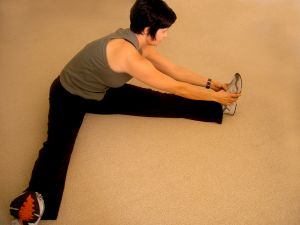Hospital data shows an increase of more than 30 per cent for sporting injuries during winter months. Exercising or playing sport in cold conditions can lead to injuries such as sprains, strains and blisters and in extreme cold conditions snow blindness, frostbite and hypothermia can occur.
Sports Medicine Australia spokesperson, Dr David Bolzonello says wintry conditions should not be a barrier to exercising. All that is needed is good preparation.
"Exercising in cold weather no doubt places extra demands on the body, which can lead to reduced sporting performance and injuries. However this doesn’t mean you have to stop exercising in winter. Most cold-related injuries can be prevented with good preparation and the correct equipment," said Dr David Bolzonello.
To help prepare for winter sports, Sports Medicine Australia, offers these timely tips:
- Acclimatise yourself to exercising in colder weather. For example, train outdoors instead of inside.
- Cold muscles, tendons and ligaments are at greater risk of injury. Warm up, stretch and cool down for longer than usual.
- Be aware that sunburn can occur even on cold and cloudy days (especially when skiing or snowboarding as UV radiation is more severe in alpine regions). Apply broad-spectrum 30+ sunscreen to exposed skin. Also wear eyewear with UV protection.
- Drink water before, during and after activity.
- Don’t drink alcohol. While an alcoholic drink seems to warm you up, it actually dilates your blood vessels, increasing blood flow to the skin thereby increasing heat loss by exchange to cold air.
- Dress in layers to trap heat and prevent heat loss. Add or remove layers of clothing as necessary according to exercise level/conditions.
- Make sure footwear fits you properly. Footwear that is too tight or too loose will affect skin circulation and cause blisters.
- Those with a pre-existing medical condition affecting the feet, such as diabetes, should see a doctor before taking part in winter sports.
"By following these preparation tips your risk of injury will be decreased – to keep you enjoying being active throughout the whole of winter," said Dr Bolzonello.
For further advice on how to prepare for cold conditions, visit www.sma.org.au.




-160x160-state_article-rel-cat.png)








-160x160-state_article-rel-cat.png)







